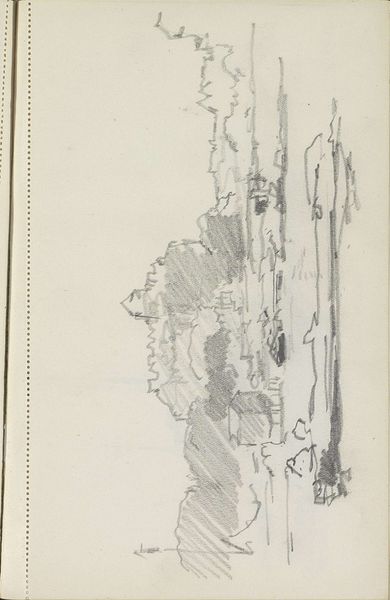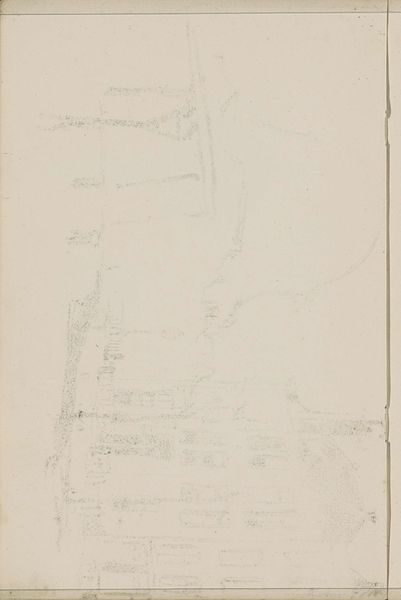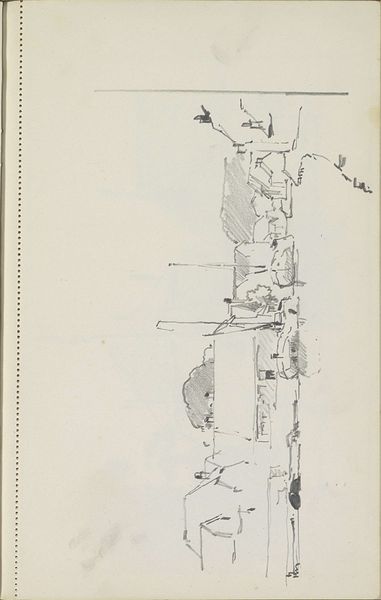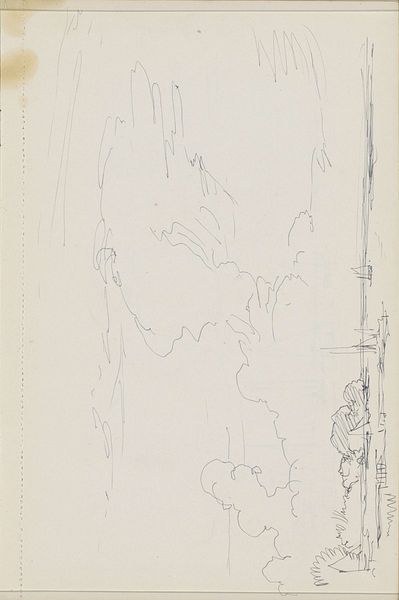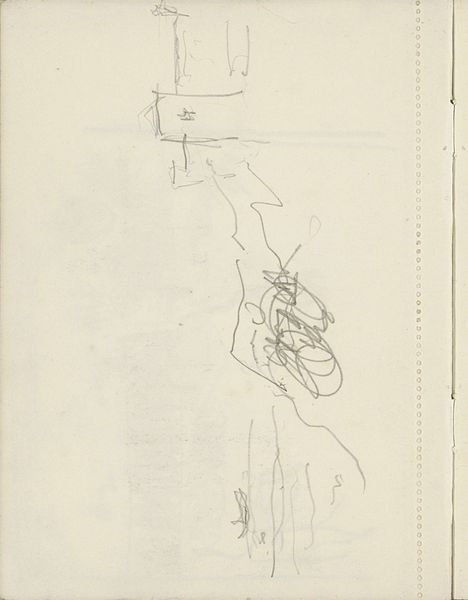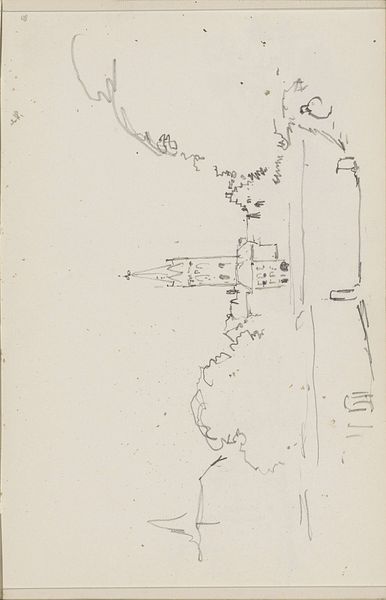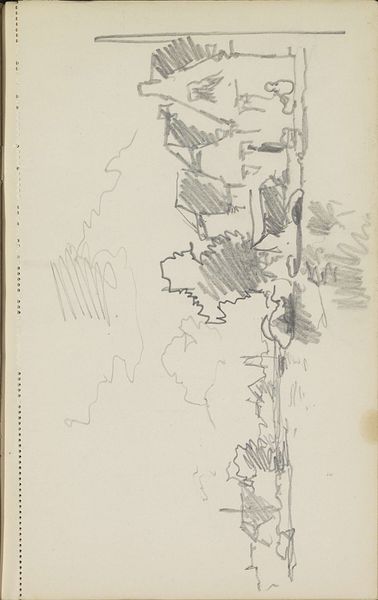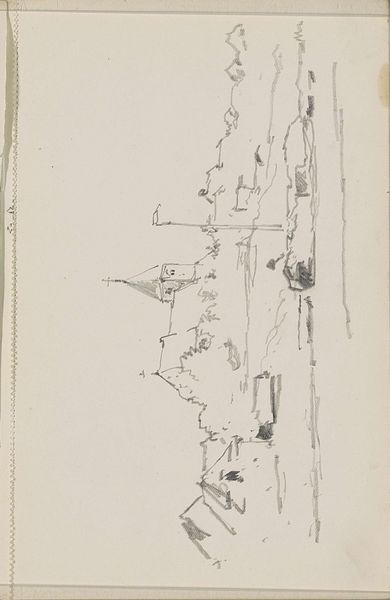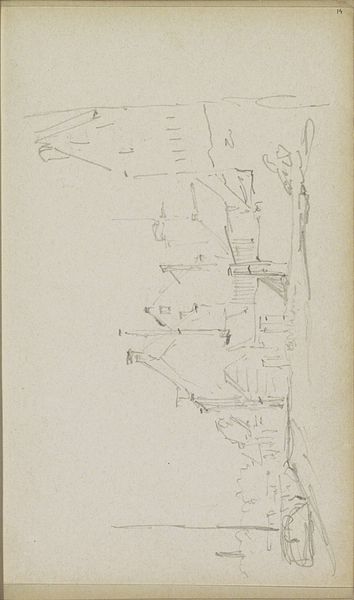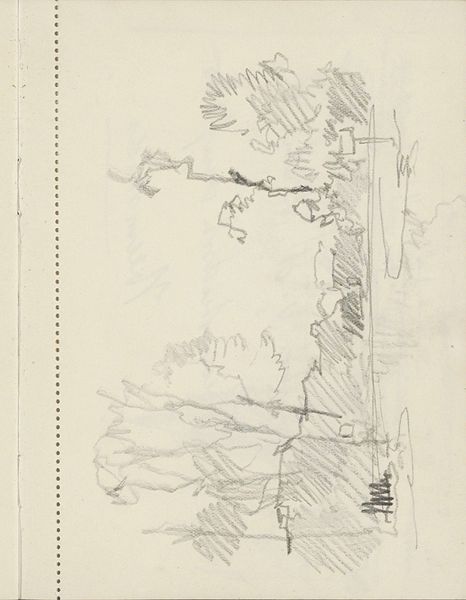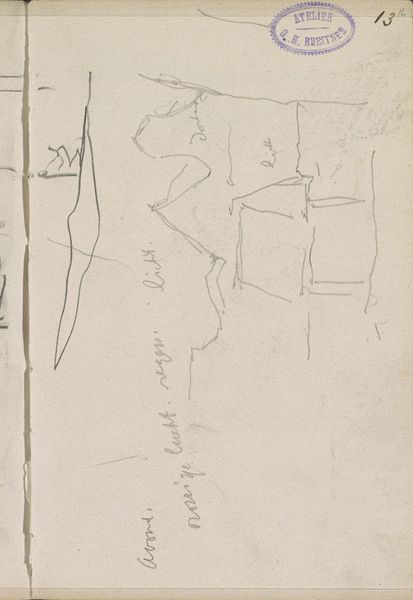
Copyright: Rijks Museum: Open Domain
Curator: Cornelis Vreedenburgh’s "Gezicht op een kerk tussen de bomen," created sometime between 1890 and 1946, offers us an intriguing pencil drawing on paper, now held in the Rijksmuseum. Editor: Immediately, I notice the striking juxtaposition of organic forms and rigid architectural lines. The church seems almost swallowed by the trees; it's an odd feeling. Curator: Indeed. Churches in art are rarely just about architecture. They are centers of power and faith, often tied to notions of community, gender roles, and social expectations. The drawing's realism clashes intriguingly with its Impressionistic leanings. I see it speaking to the relationship between institutions and nature. The pencil work adds to this, there is a sketch-like quality, creating some dynamism through simplicity. Editor: I'm compelled by the lack of shading. The composition depends so much on the sharp, almost hurried quality of the lines. The negative space feels as considered as the depicted forms themselves. The bareness reminds me of a Cy Twombly drawing somehow, even though there's an apparent realism here. Curator: What's compelling is thinking about this work against the backdrop of its creation era. The late 19th and early 20th centuries were times of questioning established norms, especially in matters of class, and religion. One could say that placing the church between and slightly behind the natural world hints at the diminishing role of such institutions. It would be intriguing to compare this piece to works depicting churches in more conventional compositions, examining the difference in how we react to such different approaches. Editor: I agree, thinking about this within a semiotic frame is so valuable here. The signifier of "church" meets the signifier of "nature," resulting in this quite stark expression of potential societal shifts, if only at a subliminal level. The artist's choice to leave so much implied really invites us to consider these larger social conversations in a very personal way. It isn't didactic, thankfully, which invites an almost immediate and lasting appeal. Curator: Precisely, the lack of clear answers makes this more potent. I'm intrigued by the silence inherent in such a basic rendering. I think one may ponder on a single drawing much more than an overcrowded canvas in certain cases. Editor: The artwork is surprisingly subtle in its power.
Comments
No comments
Be the first to comment and join the conversation on the ultimate creative platform.
